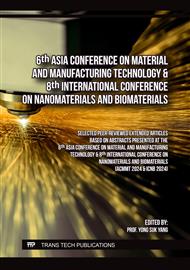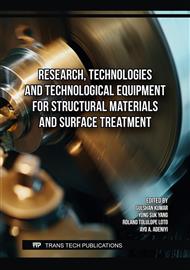p.41
p.57
p.67
p.79
p.89
p.101
p.107
p.115
p.123
Estimation of End-Milled Surface by Machine Tool Equipped with an Idling-Stop Function in a Feed Driving System
Abstract:
In recent years, as global environmental problems have become increasingly serious, the concept of sustainable development, such as the 3Rs, has gained importance. Against this backdrop, machinery and equipment are becoming smaller, lighter, more sophisticated, and multifunctional, with highly integrated products increasingly requiring the machining and assembly of minute mechanical parts. However, the relatively large amounts of servo standby power generated by small machine tools during operation highlight the need for machining methods that reduce power consumption. In this study, we developed a novel 5-axis controlled machine tool equipped with an idling-stop function in the feed-driving system to reduce the power consumption of machining processes. Since this function stops the servo lock of the feed axis, it was unclear whether the same machining accuracy could be maintained as with the original setup. Therefore, in the present study, we measured straight cutting and endpoint areas using a laser microscope and an acceleration sensor and examined the change in machining accuracy due to the idling-stop function. It was found that when the idling-stop was turned off, vibration occurred, resulting in excessive cutting.
Info:
Periodical:
Pages:
115-121
Citation:
Online since:
May 2025
Authors:
Price:
Сopyright:
© 2025 Trans Tech Publications Ltd. All Rights Reserved
Share:
Citation:



